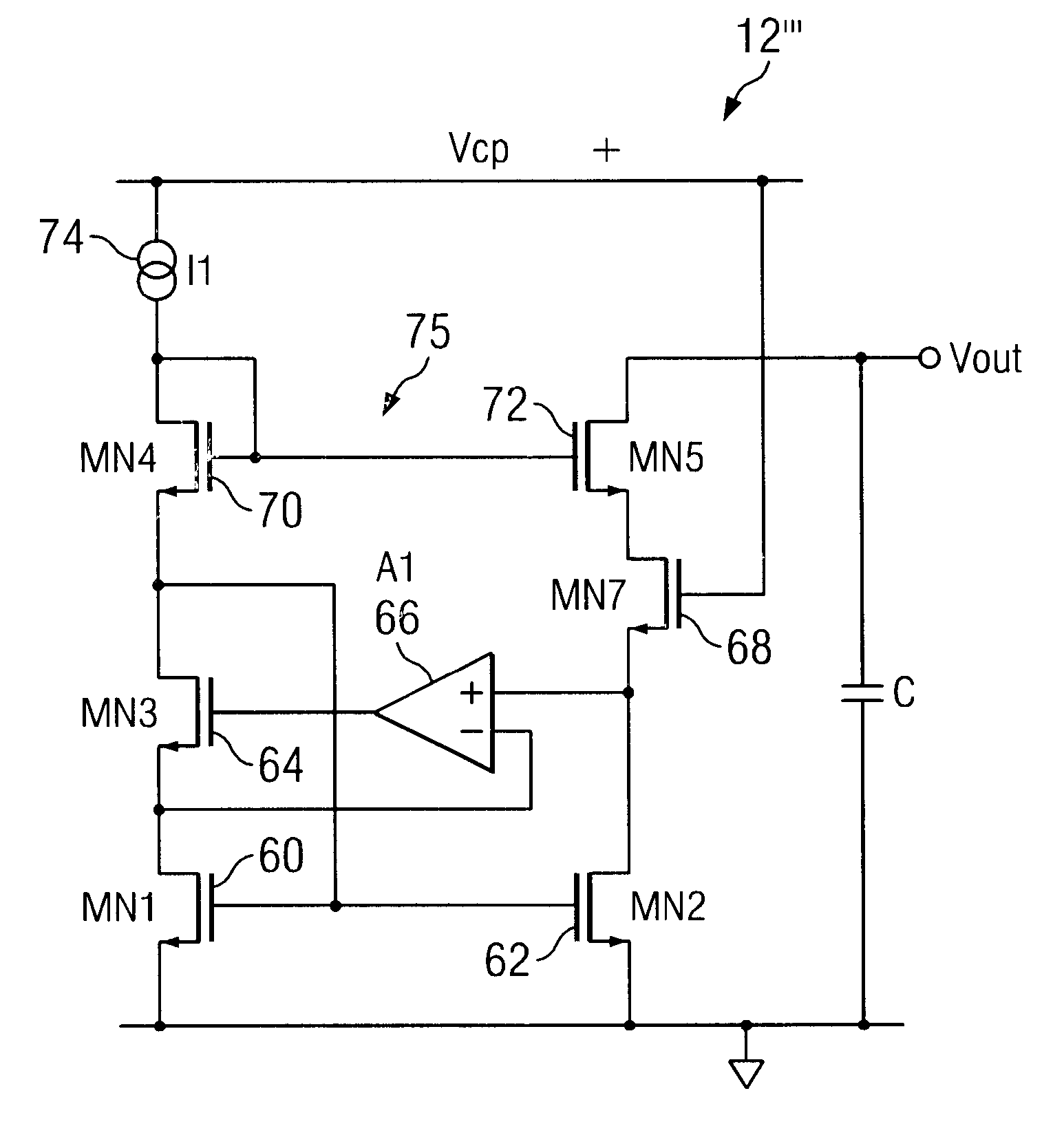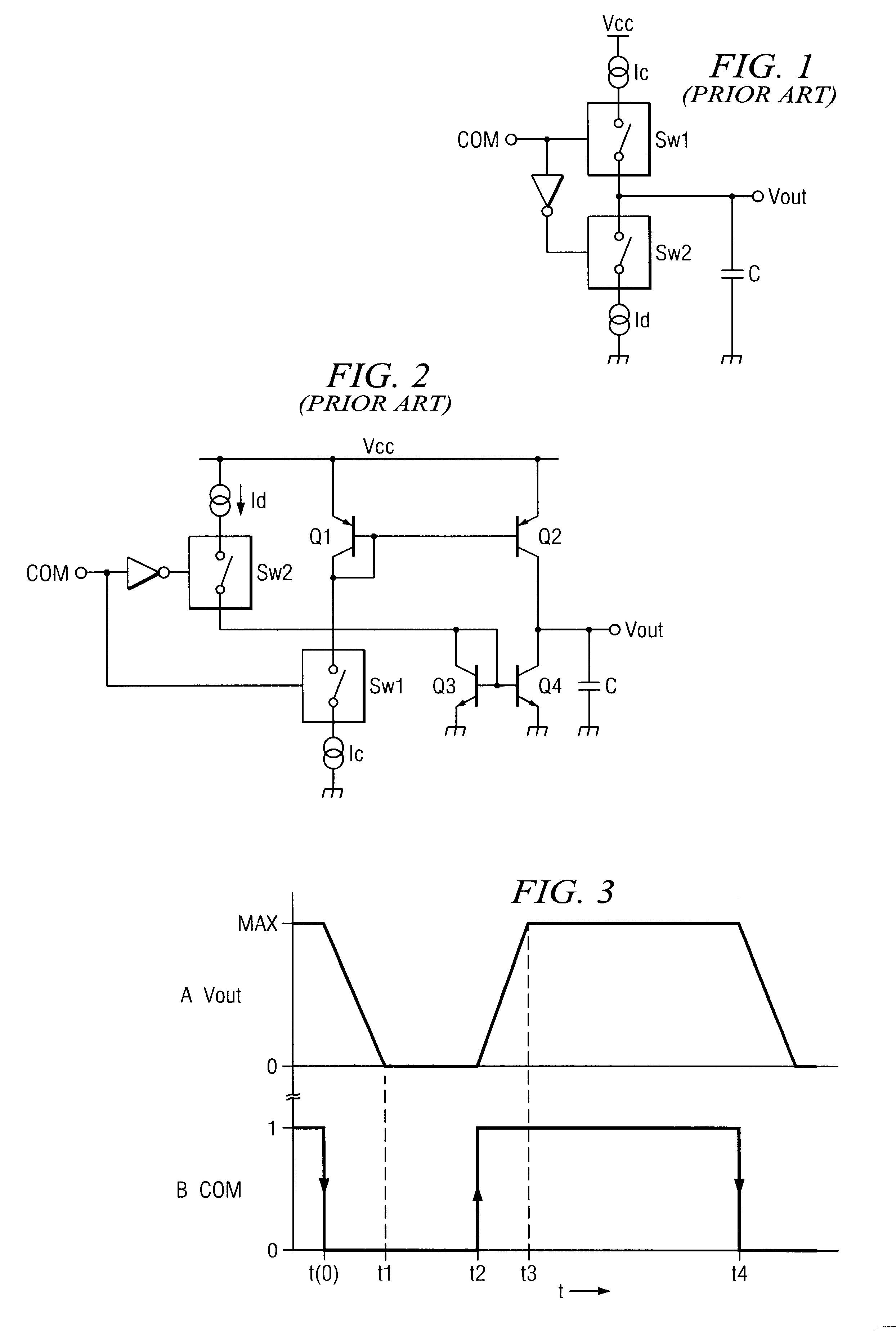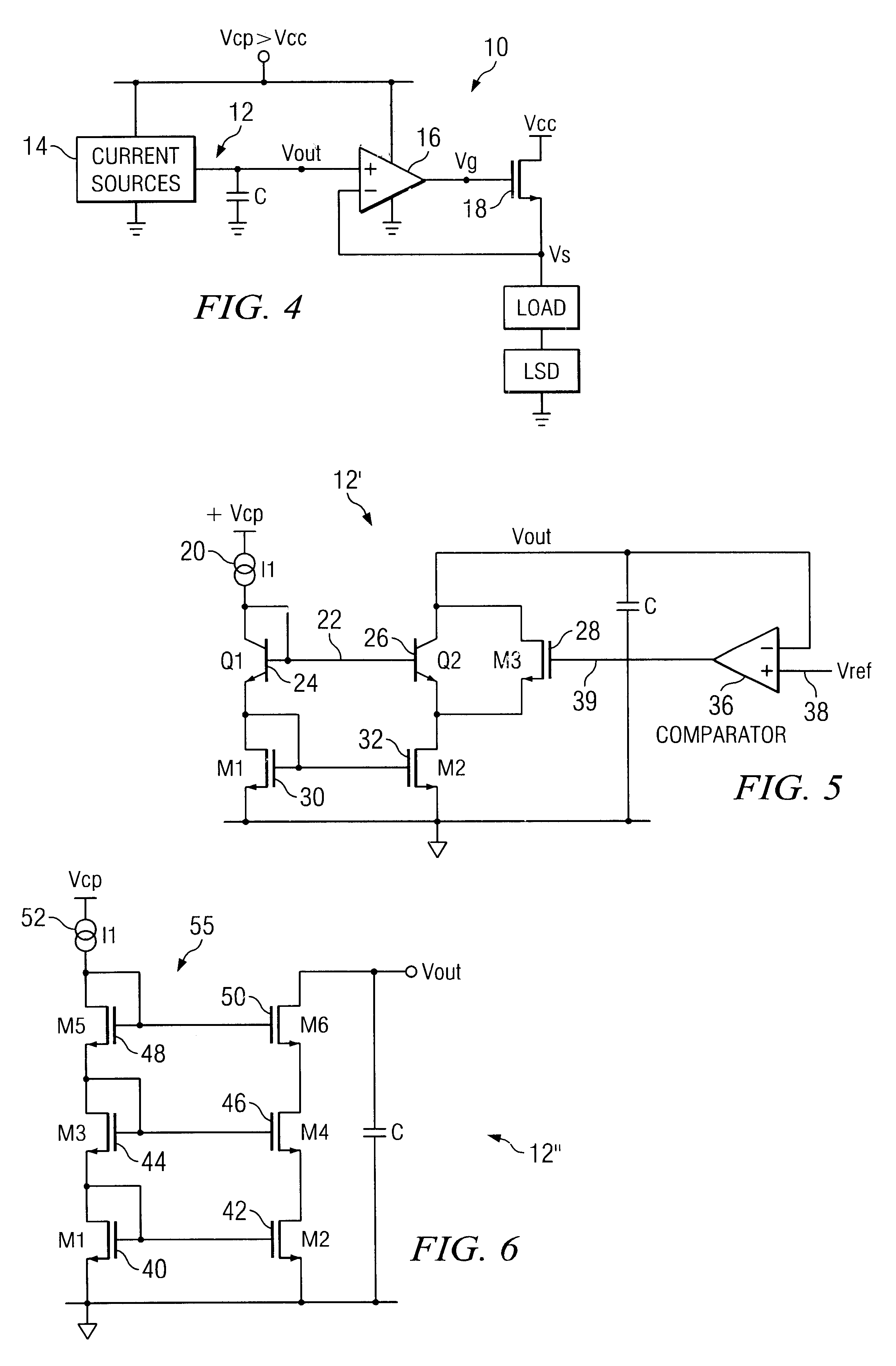Driver circuit having a slew rate control system with improved linear ramp generator including ground
a technology of linear ramp generator and drive circuit, which is applied in the direction of pulse manipulation, pulse technique, instruments, etc., can solve the problems of ineffective single cascoded solution, power limitation, and inability to achieve the desired linearity increas
- Summary
- Abstract
- Description
- Claims
- Application Information
AI Technical Summary
Problems solved by technology
Method used
Image
Examples
first embodiment
Referring now to FIG. 5, a voltage ramp generator 12' in accordance with the present invention is illustrated. Voltage ramp generator 12', unlike the prior art solutions, employs a cascoded current source 22 (as opposed to two current sources) having a cascode-connected pair of current mirrors. Voltage ramp generator 12' has the elements shown in the figure, including I1 reference current 20, Q1 bipolar transistor 24, Q2 bipolar transistor 26, M1 MOSFET 30, M2 MOSFET 32, M3 MOSFET 28, capacitor C, and comparator 36. Cascoded current source 22 has a current mirror is formed by M1 transistor 30 and M2 transistor 32 in current mirror formation, with diode-connected M1 transistor 30 in the reference leg and M2 transistor 32 in the mirror leg, Q2 cascode device 26, and diode-connected Q1 biasing device 24. For simplicity, only the sink or discharging cascoded current source of voltage ramp generator 12 is shown; one of ordinary skill in the art will recognize that a current source may be...
second embodiment
The voltage ramp generator 12" of the invention provides a simple, yet elegant, approach to providing an output voltage between a maximum voltage and ground that is highly linear. No decision-making element, such as a comparator, or switching mechanism is needed to practice this embodiment since the linear discharge of capacitor C is accomplished automatically. Only MOSFET devices are used to automatically adjust Vout while maintain high output impedance, further adding to the linearity that is achieved. Moreover, the costs attendant with combining bipolar and MOS technologies are avoided.
While the embodiment of FIG. 6 generally provides a highly linear ramp down of Vout towards ground, there is a slight deviation from linearity in the ramp when the ramp voltage Vout gets extremely close to ground and M2 MOSFET device 42 goes into the linear or low resistance region. This occurs after M6 and M4 MOSFET devices 50, 46 go into the linear region and thus FIG. 2 is effectively represente...
third embodiment
Referring now to FIG. 8, the present invention that overcomes this slight deviation in linearity and thus can ensure a linear ramp down of Vout to ground is illustrated. Voltage ramp generator 12'" overcomes the mirror error illustrated in FIGS. 7A and 7B by ensuring that the transistor in the reference leg of the current mirror is in the same region of operation as the transistor in the mirror leg of the current mirror, regardless of the region of operation of the mirror leg transistor. The circuitry of FIG. 8 relies upon the fact that the drain voltage of a MOS transistor controls the region in which the transistor will operate and thus is important to providing proper matching between transistors. Voltage ramp generator 12'" has several elements, including 11 reference current 74, MN1, MN2, MN3, MN4, MN5, MN6 MOSFET devices 60, 62, 64, 68, 70, 72, amplifier A1, and capacitor C. Gate-connected MOSFET devices 60 and 62 have their sources coupled to ground. MOSFET device 64 is coupl...
PUM
 Login to View More
Login to View More Abstract
Description
Claims
Application Information
 Login to View More
Login to View More - R&D
- Intellectual Property
- Life Sciences
- Materials
- Tech Scout
- Unparalleled Data Quality
- Higher Quality Content
- 60% Fewer Hallucinations
Browse by: Latest US Patents, China's latest patents, Technical Efficacy Thesaurus, Application Domain, Technology Topic, Popular Technical Reports.
© 2025 PatSnap. All rights reserved.Legal|Privacy policy|Modern Slavery Act Transparency Statement|Sitemap|About US| Contact US: help@patsnap.com



